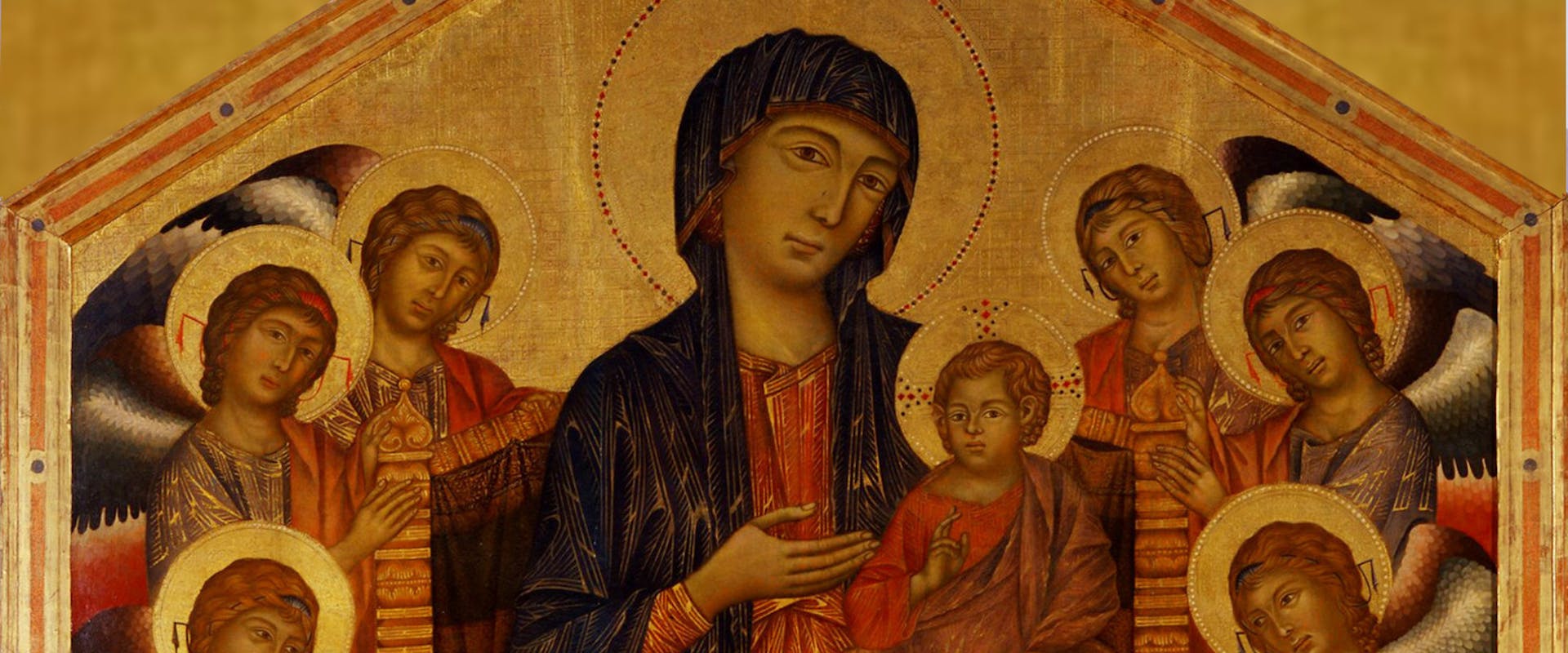Between Human and Divine: Cimabue and the Santa Trinita Maestà
The Uffizi displays in a single room three imposing Maestà (i.e. “Virgin Mary sitting on a throne”) painted between the end of the 13th and the beginning of the 14th centuries by three preeminent masters of the time: Duccio, Cimabue and Giotto. For those who enter that room the overview of the three impressive works is striking and moving. The astounding size and the iconicity of the figures cannot but raise, even in the most distracted and hasty visitors, that sense of awe and respect for the sacred and the divine, which was indeed a prominent part of Medieval culture. In Byzantine tradition, icons are sacred images where form and symbol coincide, which is a medium to reach closer to the Divine, in other words, the very link between man and God. Their execution needed a lot of time, and artists used to prepare themselves to paint through fasts and prayers. The considerable sizes of the Maestà make us assume that those panels, like crosses, used to be set very high, facing the people so that they could be seen also from afar, turning out to be the visual focuses of the whole church or cathedral they were placed in.
Today, thanks to modern technologies, we are able to watch those paintings from a privileged point of view, lingering on details, gold stampings, transparencies and topcoats that artists executed and dedicated to God, and which the churchgoers were not able to perceive from afar.
This virtual tour aims at closely analyzing the Santa Trinita Maestà, a late work of the most important painter of Central Italy in the second half of the 13th century: Cenni di Pepo known as Cimabue. In that work, he reckons with the innovations brought about by his illustrious pupil Giotto and succeeded in blending them with the Byzantine-like old tradition, which was the root his art sprouted up from.
So let’s get closer to ancient art with the modern eye provided by digital technology, and let’s re-discover symbols and meanings of religious art, which at one time were so familiar to the common man of the Middle Ages.
Curated by Patrizia Naldini
